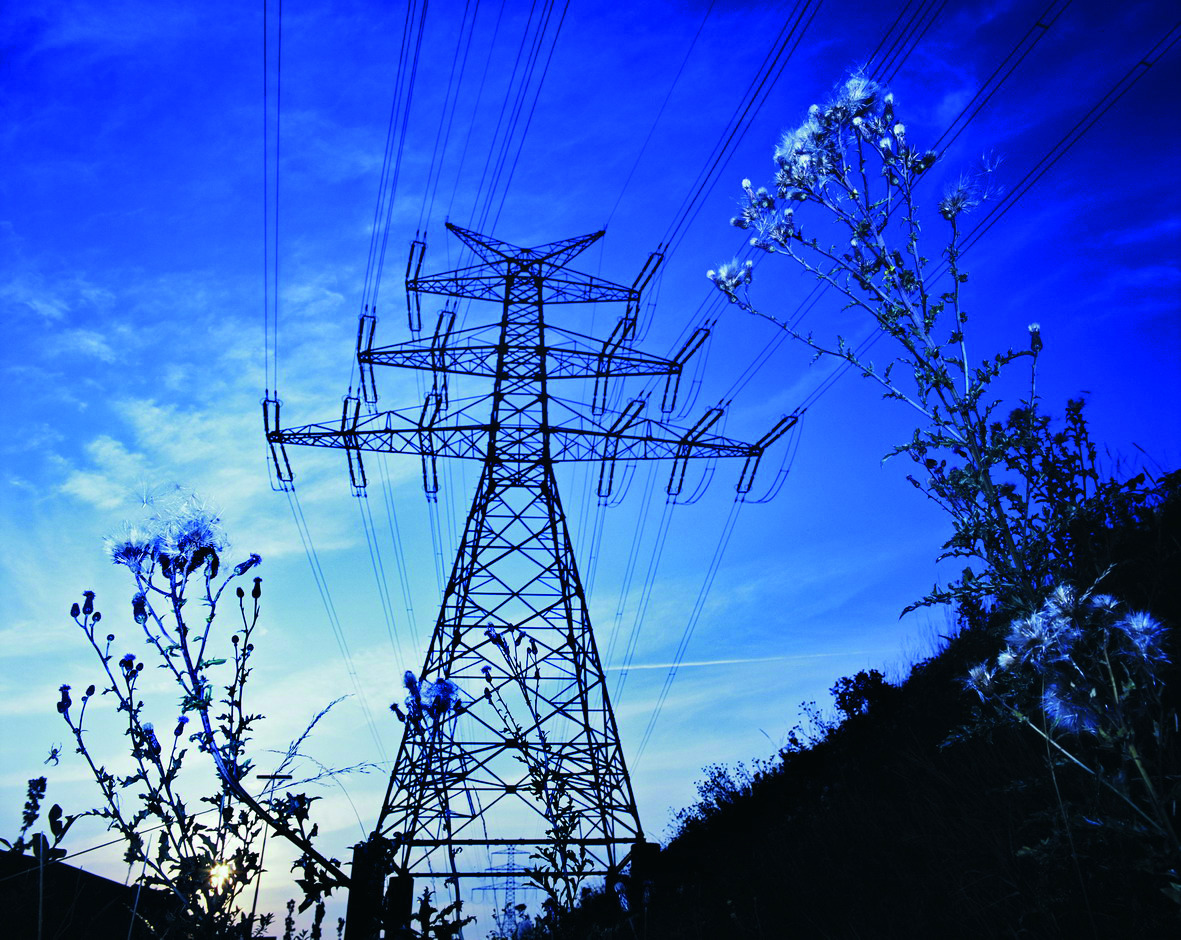Funded internship in Tokyo

The Chair of Distributed Signal Processing at RWTH Aachen University, in cooperation with its Japanese partner, is offering a fully funded internship for students demonstrating exceptional potential in the area of networking and wireless communications. The programme is aimed at both Bachelor and Master of Science students.
As Japan’s only national research institute specialising in the field of information and communication technology, NICT maintains the Beyond 5G R&D Promotion Unit, which collaborates with the Chair of Distributed Signal Processing on joint research projects. The aim of the scientific work is to design and evaluate next-generation wireless networks, taking into account cutting-edge information and communication technology and other technology areas.
An internship at the National Institute of Information and Communications Technology (NICT) involves the study of Beyond 5G use cases, with the verification of relevant communication functions and interfaces being a key element of this. One use case that proves relevant in this context is, for example, the integration of radio resource management and optimised energy management. In addition to this, contributions to the development of Beyond 5G Proof-of-Concept are to be expected, based on the defined use cases. This will be developed in cooperation with the testbed facilities of the Chair of Distributed Signal Processing. Interns will participate in regular meetings and discussions with the NICT team during their internship work, where they will receive guidance. At the end of the internship period, students are required to summarise the results and prepare a report.
The internship is based on the Beyond 5G/6G White Paper and aims to establish a long-term international research cooperation between NICT and the Chair of Distributed Signal Processing. The interns will spend four to six months in Tokyo. The financial costs associated with the stay, including travel, accommodation, overseas travel insurance and a daily allowance, are covered by the offer.
In order to participate, it is necessary to have a general knowledge of programming with pseudo-code, as well as excellent written and oral English skills and an excellent knowledge of fundamental principles in communications. Furthermore, the following Bachelor of Science or Master of Science courses must have been completed with a grade of at least 2.0:
For Bachelor of Science students: Fundamentals of Computer Science 4 – Introduction to Machine Learning Methods.
For Master of Science students: Signal Processing for Mobile Communications, Signal Processing in Multi-Antenna (MIMO) Communication System, Estimation and Detection Theory.
Applications must be submitted three months before the planned start of the internship. They can be sent throughout the year to Professor Haris Gacanin at the following e-mail address: harisg@dsp.rwth-aachen.de. Further information can also be requested at the above e-mail address.
‘MOSAIC’ : Improve acoustic well-being
HEAD-Genuit-Foundation approves new research training group ‘MOSAIC’ at RWTH Aachen University, UKA and TU Berlin
The HEAD Genuit Foundation is supporting the establishment of the new research training group ‘Acoustic well-being in a multi-domain and context-dependent spatial approach (MOSAIC)’ at RWTH Aachen University. Coordinated by RWTH Aachen University, the RWTH Aachen University Hospital and TU Berlin are also involved. Professor Janina Fels from the Chair of Hearing Technology and Acoustics at RWTH and Professor Marcel Schweiker from the RWTH Chair of Healthy Living Spaces are the scientific directors.
The MOSAIC research training group is dedicated to researching acoustic well-being in different indoor and outdoor spaces and during various activities such as learning, working and relaxing. Special attention is paid to the new research area ‘Soundscape’, which investigates environmental factors and their influence on hearing perception.
The interdisciplinary research group takes into account numerous factors that influence the acoustic experience. These include interactions with temperatures, lighting conditions, air quality, room height and room geometry. Research is also being conducted into how people react physiologically to different acoustic environments. In order to answer these questions, the research group uses laboratory experiments as well as field studies, interviews and surveys.
A total of eight chairs are involved in the Research Training Group, including seven chairs at RWTH Aachen University and the UKA and one at TU Berlin. The participating chairs include:
- Hearing Technology and Acoustics (Professor Janina Fels)
- Healthy Living Spaces (Professor Marcel Schweiker)
- Energy-efficient construction (Professor Christoph van Treeck)
- Building and Indoor Climate Technology (Professor Dirk Müller)
- Occupational, social and environmental medicine (Professor Thomas Kraus)
- Urban Planning (Professor Christa Reicher)
- Housing (Professor Florian Fischer-Almannai)
- Psychoacoustics (Dr André Fiebig, TU Berlin)
‘The funding from the HEAD Genuit Foundation will give an important boost to research into acoustic well-being. The MOSAIC research training group is helping to gain sound scientific knowledge and develop innovative solutions for an improved acoustic environment,’ – Marcel Schweiker (translation)
Rainer Waser appointed senior professor

Senior Professor Rainer Waser with Professor Max Lemme (left) and Rector Professor Ulrich Rüdiger (right). Photo: Heike Lachmann
A true interdisciplinary all-rounder with a lot of heart.
Professor Rainer Waser is a real jack-of-all-trades. The head of the Institute of Materials of Electrical Engineering 2 is not only an electrical engineer, but also a physicist, chemist and extremely knowledgeable in the fields of philosophy and sociology. Although Professor Waser officially retired last summer, he will fortunately remain with us as a senior professor.
In 1992, Waser was appointed university professor at RWTH Aachen University, and five years later he also became director of the Peter Grünberg Institute at Forschungszentrum Jülich.
RWTH Rector Ulrich Rüdiger describes him as a ‘stable bridge between Aachen and Jülich’ and this title is well deserved. With his support for the founding of the ‘Jülich Neuromorphic Computing Alliance’, he supports cross-institute work and the ‘Jülich Aachen Research Alliance’, i.e. the connection between the research centre and RWTH Aachen University, is still particularly close to his heart.
‘Not just immersing myself in one discipline, but building bridges has driven me throughout my life’ – Professor Rainer Waser (Translation)
Professor Rainer Waser’s interdisciplinary approach earned him the Leibniz Prize, the highest honour awarded by the German Research Foundation (DFG), in 2014.
‘He is an exceptional personality not only because of his depth of expertise and his love of knowledge, but also because of his willingness to cooperate and form alliances’ – RWTH Rector Professor Ulrich Rüdiger (Translation)
Professor Waser began his academic career at Darmstadt Technical University, where he graduated in 1979 with a degree in chemistry, specialising in physical chemistry. Already
During his studies, he was supported by the German National Academic Foundation. After graduating, Professor Waser worked as a research assistant at the Institute of Physical Chemistry at Darmstadt Technical University and received his doctorate summa cum laude in 1984 on the formation of surface complexes. His work at Philips Research Laboratories brought him to Aachen, where he worked from 1984 to 1992, before being appointed Professor at the Institute for Materials in Electrical Engineering at RWTH Aachen University in 1992.
‘We also celebrate your tireless commitment to research and teaching and your ability to inspire and lead others.Your expertise will continue to be a valuable asset to our university’ – Professor Max Lemme (Translation)
We congratulate him on this very well-deserved honour and take his efforts to connect not only scientific approaches, but also people, as an example.
You can find a detailed portrait of Professor Rainer Waser here.
Neuromorphic Hardware: Kick-off event in January
The NeuroSys future cluster at RWTH enters its second phase
At the beginning of this year, the Cluster4Future NeuroSys (Neuromorphic Hardware for Autonomous Artificial Intelligence Systems) is entering its second phase.
The Clusters4Future initiative is part of the German government’s High-Tech Strategy 2025 and is funded by the Federal Ministry of Education and Research.
At the kick-off event at the end of January, more than 90 participants discussed their ideas and technologies for the development of neuromorphic hardware in the Super C at RWTH Aachen University.
Neuromorphic systems are modelled on the basic building blocks of the brain, neurons and synapses. Neuromorphic hardware is a resource-saving but powerful basis for energy-intensive artificial intelligence research operations. The aim is to create a technology basis for neuromorphic components and alogrithms, building on the basic research carried out at RWTH Aachen University and the Jülich Research Centre. The coordinator of the future cluster is Professor Max Lemme, Head of the Chair of Electronic Components at RWTH Aachen University.
Learning neuromorphic AI chips could soon enable energy-efficient on-site data processing and thus offer promising prospects for future working methods, smart city concepts and the Internet of Things. Various contributions from autonomous driving to learning systems and personalised medicine will also be delivered.
The second phase of the project is planned for three years and will see RWTH collaborating with a wide range of experts from research and industry.
Further information on the project can be found here
Degree programme survey 2025
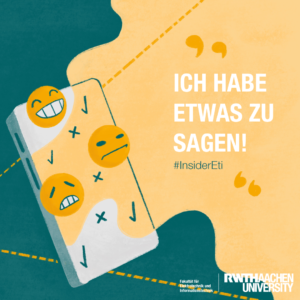
Every six years, the Faculty of Electrical Engineering and Information Technology organises a student survey, which is of particular importance for the quality assurance of academic teaching.
The aim of the degree programme survey is to improve the quality of studies based on feedback from students enrolled in the following subjects
o Electrical Engineering and Information Technology
o Electrical Engineering with orientation semester
o Computer Engineering
And since everything is interconnected, the students of Business Administration and Engineering: Electrical Power Engineering are being consulted as well.
The survey enables students to reflect on their personal study experience and to evaluate the study conditions. In order to ensure a valid database for the quality assurance of studies and teaching, every single piece of feedback is valuable. In this way, today’s students contribute to the advancement of academic teaching and enable future generations of students to build on their experiences.
‘Our students are absolute insiders when it comes to our courses. So who better to advise us on the direction in which we need to develop our teaching,’ says Martina Dahm, Managing Director of the Faculty of Electrical Engineering and Information Technology.
In recognition of their efforts, a prize draw will be held for all participating students. The prizes consist of ten vouchers per 100 participants, each worth €50, which can be redeemed as a gift voucher for Schenk Lokal. Contact details are kept in a separate record for this purpose, independent of survey content. So responses are processed without reference to individuals, ensuring anonymity.
The online survey can be accessed via a personalised link sent to students by email, which allows them to complete the survey on mobile devices or on the desktop. It is also possible to access the questionnaire via the dashboard of the RWTHmoodle accounts. There the questionnaire is easiest to complete on the desktop.
‘Colloquium Biomedical Engineering and Related Fields’ – Invitation to the current lecture
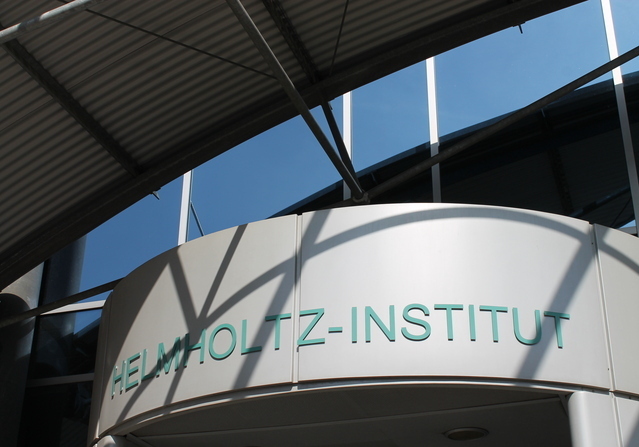
The lecture, entitled ‘Mobility in older adults‘, will be moderated by Professor Steffen Leonhardt, Chair holder of the Medical Information Technology (MedIT) at the Helmholtz Institute for Biomedical Engineering at RWTH Aachen University, on Thursday, 30 January 2025.
Professor Wiebren Zijlstra, Head of the Institute of Movement and Sport Gerontology at the German Sport University Cologne, will deliver a presentation on factors which underly age-related changes in mobility based on experimental laboratory-based studies as well as studies of real-life mobility.
In the abstract that precedes the lecture, Professor Zijlstra outlines the various challenges presented by mobility in daily life, such as finding the way to a target location, while ensuring safe progression by continuously perceiving the environment and adapting locomotion if needed, e.g. in order to avoid potential collisions with obstacles, other pedestrians, or traffic. Such adaptive control of locomotion requires physical and cognitive functions and, even without overt pathological conditions, age-related changes in functioning may cause older persons to show a reduced mobility and an increased fall risk. Mobility limitations are associated with reduced quality-of-life, a plethora of negative health outcomes, and an increased morbidity and mortality. According to Professor Zijlstra, it is important to understand factors that contribute to an age-related reduction in mobility and when possible develop effective interventions.
„Results of recent studies show that physical capacity alone is poor in predicting older adults’ mobility performance in real-life. Other studies show that age-related changes in cognition, especially the so-called executive functions, are associated with a reduced mobility and an increased fall-risk,“ the specialist points out.
Executive functions are crucial for adaptive locomotion, as they enable a person to monitor behaviour in relation to the environment and to adapt behaviour when necessary. By focusing on two key components of executive functions (cognitive flexibility and inhibitory control), this talk will also present recent results from studies that aim to better understand the role of cognitive control during mobility-related tasks.
Despite an abundance of mobility studies and increasing insight in factors that negatively impact on mobility in older persons, it is yet unclear to what degree the combination of these factors predicts real-life mobility, Professor Zijlstra continues in his apstract. Only a limited number of recent studies considered various potential mobility determinants by combining measures from physical, cognitive, and psycho-social functioning.
„These studies showed that real-life mobility cannot yet be predicted very well. Taken together, these findings necessitate more well-focused studies of real-life mobility in various groups of older adults, as well as experimental studies of older adults’ performance of complex mobility tasks which resemble daily life conditions,“ he concludes.
The ‘Colloquium on Biomedical Engineering and Related Areas’ is a regular series of events organised by RWTH Aachen University. The objective of the series is to facilitate interdisciplinary education in these fields and to encourage the interdisciplinary exchange of ideas.
A cordial invitation is extended to all students, clinicians, engineers and scientists to attend this illuminating lecture and engage in discourse with experts in the field of biomedical engineering.
The event will take place from 5 to 5:45 pm at the Helmholtz Institute for Biomedical Engineering at RWTH Aachen University, Pauwelsstraße 20, 52074 Aachen, Germany, seminar room 2.70. It will be coordinated by Prof. Dr. Klaus Radermacher, Chair of Medical Engineering, RWTH Aachen University. For further information please contact the secretariat at meditec@hia.rwth-aachen.de or call +49-(0)241-80 23870.
Hackers, attacks and malware – an up-to-date overview
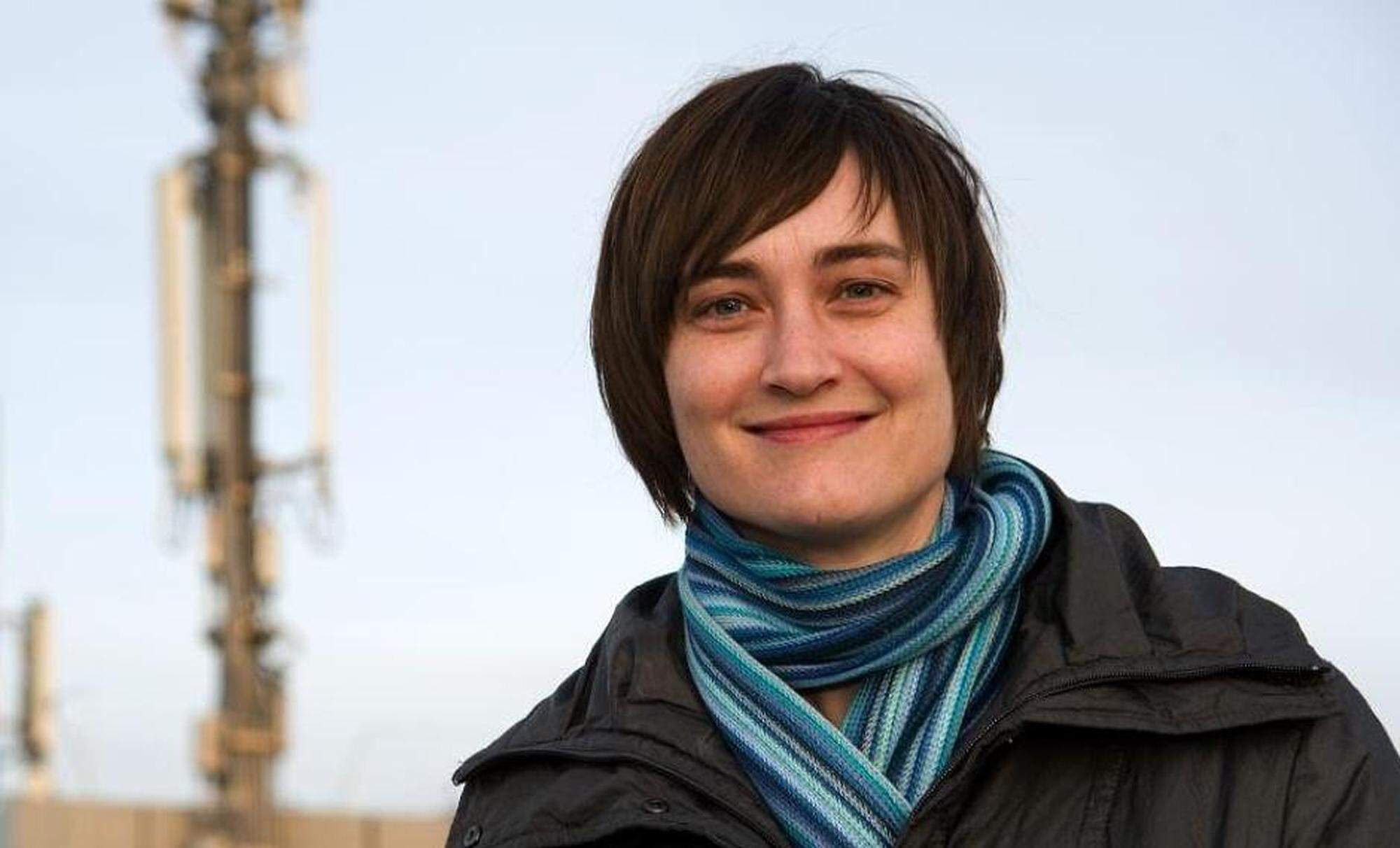
Professor Ulrike Meyer, ©Peter Winandy
Professor Ulrike Meyer from the Department of IT Security at RWTH Aachen will give an online lecture on Wednesday, January 29, 2025, from 5:00 PM to 6:30 PM, followed by a discussion. Admission is free.
The threats posed by cyberattacks have steadily increased, and IT security has thus increasingly come into focus for companies as well as individuals. During the presentation of the current report on the state of IT security in Germany (2024) by the Federal Office for Information Security, its president Claudia Plattner describes the IT threat situation as “worrisome” and states that “particularly ransomware, espionage, and disinformation endanger our prosperity and our democracy”.
The lecture addresses current attacks and the underlying business models of cybercriminals. Additionally, a selection of solution approaches developed at RWTH for attack detection using machine learning will be presented.
In cooperation with the Computer Science Department of RWTH, FZ Jülich, Regional Group of the Society for Computer Science (RIA), Regional Industrial Club for Computer Science Aachen (Regina), and Aachen Group of the German University Association.
Access to the webinar and video via access link
If someone misses the lecture, they can watch it later as a video.
Back to the roots
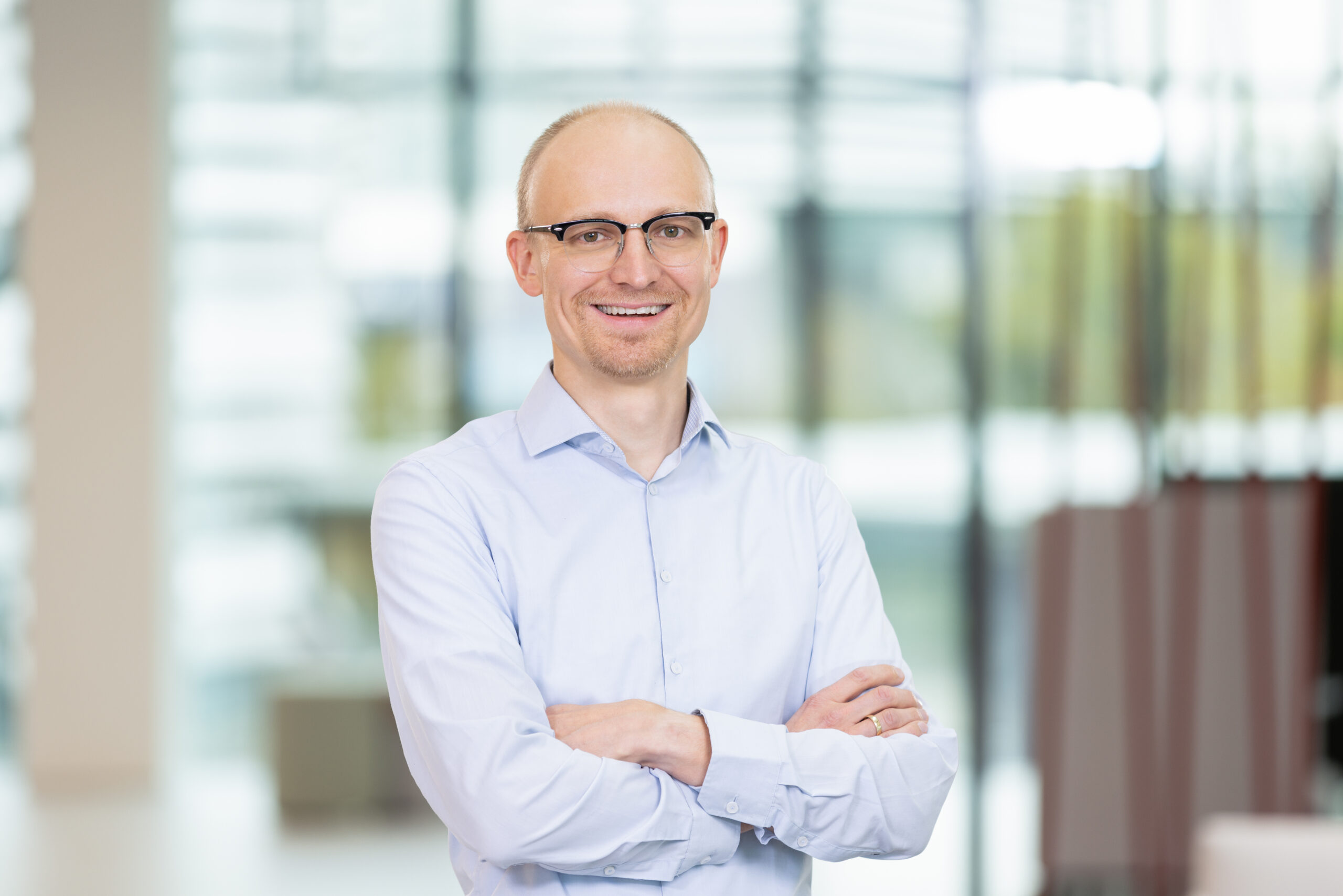
Professor Simon Steentjes, a former student of RWTH Aachen University and the current holder of the Chair of Electrical Machines and Drives ©Christian Schneider
Professor Simon Steentjes returned to his academic roots in October 2024 to become holder of the Chair of Electrical Machines and Drives.
The 37-year-old professor’s passion for technology was cultivated during his childhood, and led him to RWTH Aachen University for the first time in 2006. Here, he successfully completed his studies in Electrical Engineering and Information Technology, subsequently earning his doctorate under the supervision of his predecessor, Professor Kay Hameyer.
„I learned from an early age to repair things instead of throwing them away. My father showed me everything as a child. We often tinkered until things worked again,” recalls Professor Steentjes.
It was these formative experiences that not only ignited his enthusiasm for technology, but also instilled in him a strong commitment to sustainability.
„I want to leave behind a world worth living in for my child and future generations; thus, I consider sustainable development within electric machines and drives absolutely essential,” states the electrical engineer.
Electrical machines are indispensable for numerous applications – from industrial facilities, mobility solutions, and household appliances to energy supply systems. As such, enhancing the efficiency of electric machines and drives represents a significant opportunity for reducing CO₂ emissions – a crucial step toward protecting our climate, according to Steentje. He emphasizes that ongoing research and innovation are essential to enhance power density, torque density, efficiency levels, and manufacturing techniques while maintaining resource efficiency when integrating new technologies. Steentjes believes that we also need to gain a deeper understanding of the materials and resources used to manufacture our electrical machines to optimize their sustainability and efficiency. The use and production of magnetic materials alone – integral components found within every electrical machine – offers vast potential for optimization that must first be thoroughly understood by researchers like himself.
„To date, little attention has been paid to the advances made by the various disciplines involved or to specific components. While manufacturing technology evolves rapidly, these advancements must also inform production methods and design choices surrounding electric machines to harness opportunities for improved efficiency fully,“ the engineer points out.
Simon Steentjes is a researcher through and through. He relishes engaging with fellow researchers on pressing questions while finding solutions collaboratively, often alongside students and doctoral candidates – a dynamic he finds immensely rewarding. For him, working with young minds means fostering fresh ideas that keep him on the cutting edge. He finds it wonderful to be back in teaching.
The electrical engineer returned to academia having worked in industry before. At Audi, he was actively involved in e-mobility from the very beginning. Later, at Hilti, he took on the role of head of electric motors and drive technology in 2022, leading the development of a new electric motor platform for power tools, from concept to mass production, among other initiatives. During this time, Professor Steentjes experienced how crucial practical feedback is for designing and developing electrical machines, particularly in addressing the needs and challenges inherent of series production.
During his time in industry, he supervised around 20 doctoral theses. Publishing scientific work remained a priority for him despite his time away from academia – a clear indication that he always intended to return. Steentjes considers himself lucky to have turned his hobby into a career. He believes it’s important to do what makes you happy. And it is this attitude that he passes on to his students:
„As a professor, you have a responsibility to equip the next generation with knowledge, to motivate and encourage them to trust in their own abilities.“
He has now found his way back to academia. His return means also a personal success: Returning to RWTH Aachen University was a very personal mission for him, which he worked towards with the help of his family. The support of his family is particularly important to the husband and father. And when he’s not researching new electrical machines or drives, he likes to work with his son on motorising Lego vehicles.



